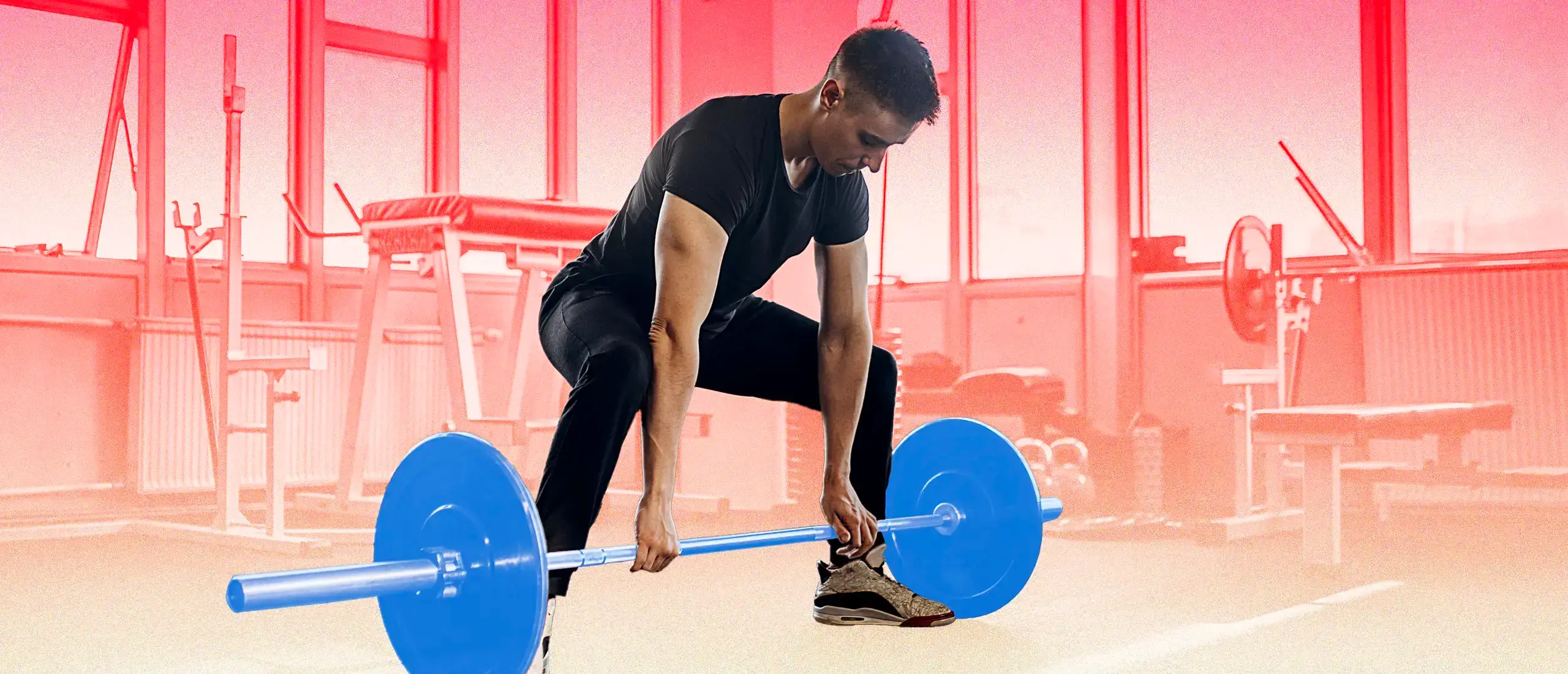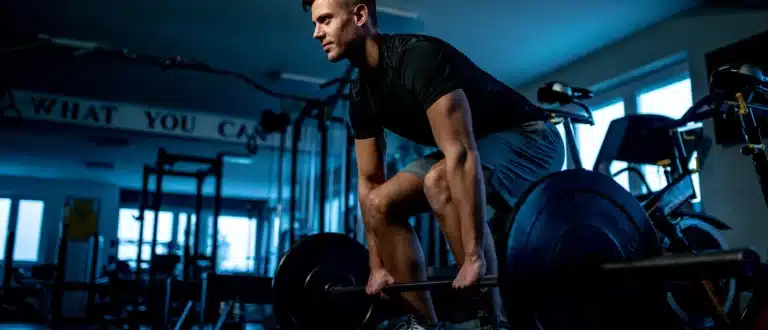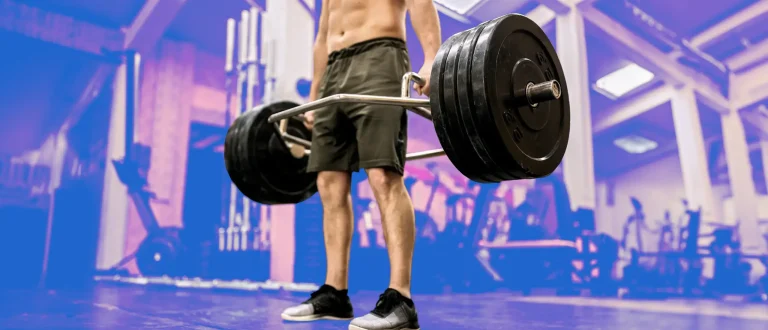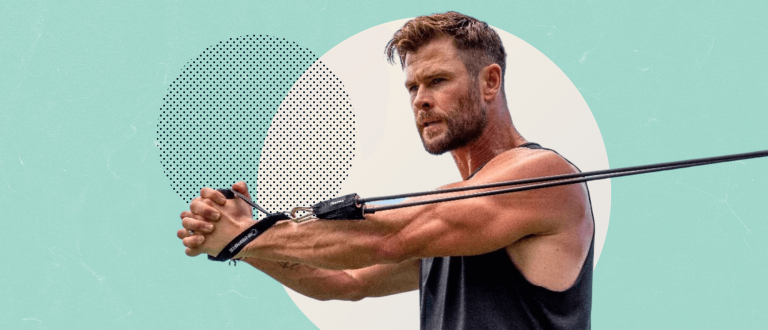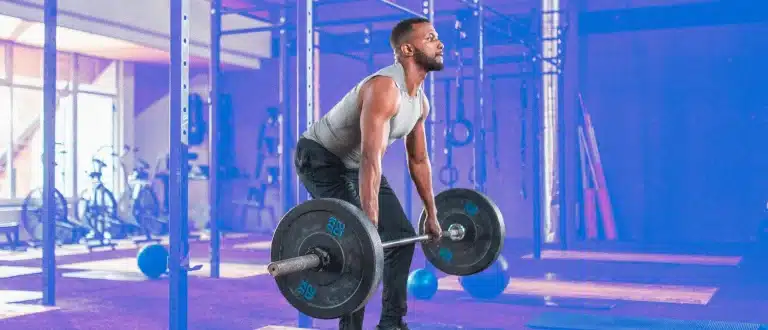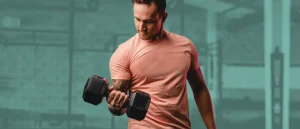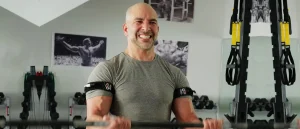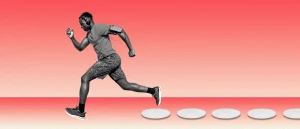RDL vs. Deadlift: Which Is Better for Your Goals?
- By Sydney Bueckert, NASM C.P.T., C.E.S., F.N.S., G.P.T.S.
- December 1, 2023
30-Second Takeaway
- Both Romanian deadlifts and traditional deadlifts are considered compound exercises, with a hip-hinge movement pattern.
- Traditional deadlifts move through a full range of motion, firing up more muscle groups. This makes them ideal for lifting heavy and improving functional strength.
- Because Romanian deadlifts involve a comparably limited range of motion, they reduce your risk of injury and are a good option for building muscle mass in the glutes and hamstrings.
Whether you’re a weekend warrior or a strength athlete, no well-rounded training plan is complete without deadlifts. Which deadlift variation deserves the top spot in your exercise arsenal, however, is up for debate.
Deadlift purists swear by the traditional deadlift for building the ultimate strength needed for powerlifting and CrossFit competitions, as well as the functional fitness to lift heavy things off the ground in everyday life. But slight shifts in form and range of motion can make certain deadlift variations—like the Romanian deadlift (RDL)—better for minimizing pain and risk of injury, and maximizing time under tension on the glutes and hamstrings for more targeted gains.
In the RDL vs. deadlift faceoff, which should you choose? Certified personal trainer, James King III, CSCS is here to set the record straight.
About the Expert
James King III is a CSCS certified personal trainer, and Precision Nutrition Level 1 nutrition coach. After living an unhealthy lifestyle for several years, King was more than 50 pounds overweight and lacked confidence. After implementing many of the same strategies and systems he now shares with his clients, he lost over 50 pounds. And kept it off for good. Since transforming his health, he has dedicated his life to helping others experience the same changes he experienced through his own transformation.
RDL vs. Deadlift
To the untrained eye, the RDL and deadlift look nearly the same. They’re both compound exercises that involve pulling weight up to lockout in a standing position using a hip-hinging motion. They’re also both solid picks for building posterior chain strength—AKA the muscles in the back of your body like your back, glutes, and hamstrings.
Look closer, however, and you’ll realize what’s happening behind the bar is distinctly different.
Romanian deadlift
The RDL primarily targets the hamstrings, glutes, and lower back, with help from the adductor magnus, calves, traps, and forearms. “RDLs emphasize the eccentric (lowering) phase and hip-hinge movement without bending the knees,” says King. The barbell is lowered down the front of the legs, maintaining a slight bend in the knees and stopping around mid-shin level (or wherever hamstring flexibility allows).
Deadlift
The conventional deadlift works a broader range of muscles since it requires the entire body to be engaged for proper completion. It works mostly the quads, glutes, hamstrings, and lower back, but calls on serious help from the trunk (core and back) and forearms for stability. “The deadlift begins with a barbell on the floor, and involves bending at both the hips and knees to lift the barbell to hip level, then returning it to the floor,” King explains.
Differences Between the RDL and Deadlift
Slight differences in range of motion and form between the RDL and deadlift affect muscle engagement, and most importantly, what you should use each lift for. Here’s how they stack up:
Range of motion
The primary difference between the RDL and deadlift is the placement of load (barbell, dumbbells, etc.) at the start of each rep and the overall range of motion.
With the traditional deadlift, you’re starting (and ending) each rep on the floor. You pull the bar off the ground as you rise to a standing position with the bar at hip height, then lower it back to the ground to complete the rep.
The RDL, on the other hand, starts in a standing position, with the bar at hip level. As you lower the load, you’ll stop around mid-shin height (depending on your mobility), not touching the ground before returning to the standing position.
Form
While the idea with both the traditional deadlift and RDL is to engage your core, maintain a neutral spine, and “shave your legs” with the barbell or dumbbells, the placement of your body behind the load differs slightly.
During the descent of a traditional deadlift, you’ll have to bend your knees to lower the bar to the ground gracefully. Too little knee bend towards the bottom of a deadlift can position your hips above your chest, which can put undue strain on your lower back.
With the RDL, however, your hips remain higher and your knees remain straighter. Rather than relying on lowering the weight further or bending your knees to increase range of motion, the common cue is to focus on pushing back with your hips to deepen the stretch in your hamstrings. This requires precision and control which typically calls for lower loads.
Muscles targeted
Both the deadlift and the RDL activate your entire posterior chain. Your back, glutes, hamstrings, quads, and core are involved to some degree with both lifts—but not equally.
Because the classic deadlift drops the hips lower and involves more of a knee-bend than the RDL, it engages the quads more (1). It hammers the glutes for the very same reason.
Alternatively, since your knees remain relatively straight throughout the RDL, it amps up the stretch (and thus, activation) of the hamstrings.
That doesn’t mean the traditional deadlift doesn’t work your hammies, or the RDL isn’t a solid option for strengthening your glutes. The traditional deadlift is just more of a full-body heavy hitter, while the RDL is more of a hamstring specialist.
RDL Benefits
While there are benefits to both the RDL and deadlift, there are certain situations where the humble RDL excels:
It’s safer
“RDLs place less stress on the lower back than traditional deadlifts for a few reasons,” says King. By starting standing and stopping mid-shin, the RDL bypasses the window where form typically breaks down during traditional deadlifts: from mid-shin to ground. In this position, it’s all too common to relax your lats and round your back, shifting the load (and thus, strain) to your lower back. This takes the focus off your glutes and hamstrings, and increases your risk of injury.
RDLs also call for slow, and controlled movement particularly during the eccentric phase of the lift—when you’re lowering the load to your shins. “This control allows for better muscle engagement and reduces the likelihood of injury due to sudden or jerky movements,” explains King. Since you can’t slam weight around like you might with a heavy traditional deadlift, you’ll naturally shift to lighter weight with the RDL.
It’s king for hamstring and glute development
If your goal is to build muscle, the RDL prioritizes the development of your glutes and hamstrings particularly well. Why? “RDLs enable you to optimally emphasize the eccentric (lowering) phase of the movement, where muscles lengthen under tension,” says King. That stretch on your hamstrings and glutes, doubled with extra time under tension from slowly controlling the movement is a double whammy for muscle growth (2, 3).
Deadlift Benefits
Just because the RDL might be safer and help you build double-take-worthy glutes and hams, doesn’t mean you should ignore the traditional deadlift. Here’s why you should consider keeping this classic in your regular rotation:
It’s more functional
While the RDL is arguably a safer way to practice hip hinge mechanics, nothing prepares you for *actually* lifting heavy loads off the ground like a traditional deadlift. “The deadlift not only helps you develop the power and strength needed to lift heavy items, it teaches you how to lift them safely without injuring your lower back,” explains King. Whether you need to lift a heavy couch, or help heft an older adult who slipped and fell off the ground, mastering the deadlift will ensure you know how to use your core properly to complete a heavy lift at unexpected moments.
It’s better for lifting heavy
With a traditional deadlift, you’ll need to incorporate ground-to-top explosiveness to tear the weight off the ground—which will require more strength and muscles to get the job done.
Unlike the RDL, the deadlift isn’t the time or place to build time under tension while you’re lowering the weight. This doesn’t mean you shouldn’t lift with control—an essential element of lifting safely is being in control of the load you’re working with (and not vice-versa). But, it does mean you can load up the bar with more weight since you won’t be putting extra emphasis on controlling the descent of the bar like you would with the RDL.
Since you can work with more weight, this makes the deadlift a better option for building overall strength. It also comes with a few side perks, like building more grip strength in the process.
Which Deadlift Variation Is Better For You?
Both the RDL and deadlift have their place in a well-rounded routine, per King.
When to do the deadlift
“If you want to build maximum strength and power, firing up as many muscles as possible, make the deadlift your go-to,” says King. After your warmup, start your workout with this move, he adds. Since it taxes your entire body, you’ll want to hit it with full energy in the tank.
When to do the Romanian deadlift
“RDLs are great for adding muscle mass to the glutes and hamstrings,” says King. “They’re also a good option when you don’t feel like lifting particularly heavy.” Lifting heavy requires more rest, plain and simple. Varying reps, sets, and loads throughout the week can give your body more time to recover, while accommodating for both strength and mass gains. That’s where subbing deadlifts for RDLs can come in handy.
The Bottom Line
Both deadlifts and Romanian deadlifts are solid compound exercises that emphasize a hip-hinge movement pattern. If your mobility and health allows, both deserve a spot in a well-rounded training plan. The deadlift is better for building full body, functional, brute strength—which is important for both everyday lifters and powerlifters. The RDL is a safer option that allows you to decrease the load and focus on form, while building time under tension, eccentric strength, and thus, muscle mass in the glutes and hamstrings.
References
1. Lee, S. et al. (2018). An Electromyographic and Kinetic Comparison of Conventional and Romanian Deadlifts.
2. Oranchuk, D. et al. (2019). Isometric Training and Long-Term Adaptations: Effects of Muscle Length, Intensity, and Intent: A Systematic Review.
3. Wilk, M. et al. (2021). The Influence of Movement Tempo During Resistance Training on Muscular Strength and Hypertrophy Responses: A Review.



